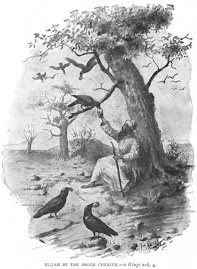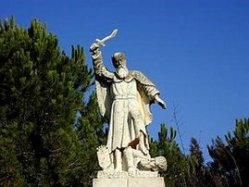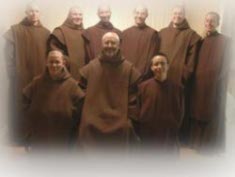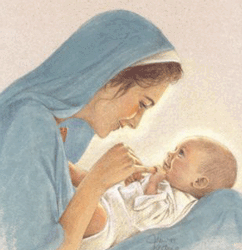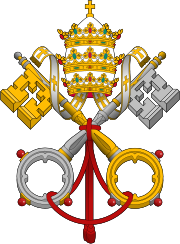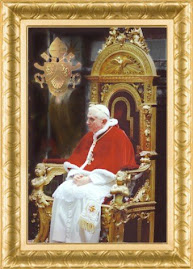In the wake of oncoming doctrinal talks between Vatican theologians and SSPX experts on Catholic doctrine and liturgy, Catholic Herald 's journalist, Moyra Doorly, exchanged insightful letters on the matter of unprecedented Vatican II reform of the Catholic Church with Dominican theologian Aidan Nichols. Very interesting reading, some excerpts below.
Letter from a confused Catholic: Could the liturgical crisis stem from the Council itself? by Moyra Doorly
...Given that the 20th century produced so many silver-tongued visionaries determined to sweep away the past and remake the world, could the liturgical renewal simply be another example of a big idea gone wrong? And could the current liturgical crisis actually stem from the Council itself which articulated the vision? One clue is to be found in paragraph two of the General Instruction on the Roman Missal (GIRM), which asserts that Vatican II reaffirmed the sacrificial nature of the Mass as affirmed by the Council of Trent in accordance with the Church's universal tradition. The GIRM then refers to the Constitution on the Sacred Liturgy (CSL) which states: "At the Last Supper, on the night he was betrayed, our Saviour instituted the eucharistic sacrifice of his Body and Blood. This he did in order to perpetuate the sacrifice of the Cross throughout the ages until he should come again, and so to entrust to his beloved Spouse, the Church, a memorial of his death and resurrection: a sacrament of love, a sign of unity, a bond of charity, a paschal banquet in which Christ is consumed, the mind is filled with grace, and a pledge of future glory is given to us" (paragraph 47)....
...But compare this with an apparently similar, but significantly different, definition of the Mass in Pope Pius XII's 1947 encyclical Mediator Dei: "Christ the Lord, Eternal Priest according to the order of Melchisedech, loving His own who were of the world, at the last supper, on the night He was betrayed, wishing to leave His beloved Spouse, the Church, a visible sacrifice such as the nature of men requires, that would re-present the bloody sacrifice offered once on the cross, and perpetuate its memory to the end of time, and whose salutary virtue might be applied in remitting those sins which we daily commit ... offered His body and blood under the species of bread and wine to God the Father, and under the same species allowed the apostles, whom He at that time constituted the priests of the New Testament, to partake thereof; commanding them and their successors in the priesthood to make the same offering" (paragraph 67, my emphasis)...
...Somehow the propitiatory character of the sacrifice of the Mass has been dropped from the CSL version, with the emphasis placed on a "bond of charity, a paschal banquet" etc, and the Mass is described as a memorial of Christ's "death and resurrection"....
....In the Catechism of the Council of Trent, the various terms used to "convey the dignity and excellence of this admirable sacrament" are explained, eg the Eucharist, the Sacrifice, Communion, the sacrament of peace and charity, the supper. Also explained are the three things indicated by this sacrament: "The first is the Passion of Christ the Lord, a thing past ... Another is divine and heavenly grace, which, being present, is imparted by this sacrament, to nurture and preserve the soul ... The third thing, which it foreshows as future, is the fruit of eternal joy and glory, which, according to God's promise, we shall receive in our heavenly country."...
...But no room is left to doubt that "the Eucharist was instituted by Christ for two purposes, one, that it might be the celestial food of our soul, by which we may be able to support and preserve life; the other, that the Church might have a perpetual sacrifice, by which our sins might be expiated"....
....And also that, "it must be unhesitatingly taught that ... the holy sacrifice of the Mass is not a sacrifice of praise and thanksgiving only, or a mere commemoration of the sacrifice accomplished on the cross, but also a truly propitiatory sacrifice, by which God is appeased and rendered propitious to us."....
....To be fair, the GIRM paragraph two, does include the following: "The Mass is a sacrifice of praise, of thanksgiving, of propitiation and of satisfaction." But then it goes on to practically ignore this, as do the rest of the Council documents. Everywhere the emphasis is on the Mass as a memorial of Christ's Death, Resurrection and Ascension - the Paschal Mystery - which the people gather to celebrate as if salvation is guaranteed because God's love is unconditional and His justice makes no demands....
Reply a confused Catholic: The contrasts you draw are unnecessarily sharp
by Fr Aidan Nichols
...we need to work on not only catechesis but also, in the fullness of time, a revision of the Offertory texts, the ceremonial of the Mass, and (not least) the position of the celebrant so as to re-activate the diminished but by no means extinguished feeling of the faithful for the sacramental identity of Calvary and the Eucharist of the Church. The things you mention that would increase reverence (the chant, kneeling communion, communion on the tongue) are not strictly necessary accompaniments of the Mass (the Eastern churches, for instance, stand to receive), but they are congruent with the demands of the Mass (every Mass, so including those in the Novus Ordo)....
...You are correct to say that the ministerial priesthood of the ordained and the royal and universal priesthood of the baptised are two distinct yet related ("analogous") ways of sharing in ("participating") the priesthood of Christ. The universal priesthood is exercised most obviously in the good works which should embody faith throughout the Christian life. That general priesthood also has, however, a cultic dimension. Just as it was begun for the faithful in the sacramental mysteries of Baptism, so it finds its noblest expression in their Eucharistic worship. At Mass the baptised exercise their royal priesthood because, in Pope Pius's terminology (see Mediator Dei 88), they are "members of the Mystical Body of Christ the Priest", while the Head of that Body represents himself to them in the ministerial priest who, like Christ himself, stands before the Father on their behalf. The ordained minister's analogical participation in Christ's High Priesthood is, accordingly, different from that of the lay faithful. The latter can offer the (as yet, unconsecrated) gifts in a properly Eucharistic way only through the hands of the ministerial priest, though once those gifts have become, through the act which is his by the New Covenant sealed at the Supper, the Body and Blood of the Lamb, they co-offer with him the saving Victim to the Father. Were there, you ask me, layfolk in the Cenacle at the Last Supper? I have to answer that I don't know. But I do know that in the High Priestly Prayer recorded from that Supper in the Gospel of St John, the Saviour prays that the apostolic priesthood may truly be consecrated so that a far wider flock may be gathered into their company. Every Mass, even when celebrated by a hermit priest in the desert, is offered in the name of the whole Church: not only validly but fruitfully for the living and the dead. The Mass of the hermit is a moving testimony to the unseen. But the mystery of the Mass finds its liturgical epiphany when celebrated with the holy people of God - and notice I add the adjective "holy", as in the Latin original of the phrase (plebs sancta Dei), since mere demonstration of numbers signifies nothing in divine arithmetic....
...Given that the 20th century produced so many silver-tongued visionaries determined to sweep away the past and remake the world, could the liturgical renewal simply be another example of a big idea gone wrong? And could the current liturgical crisis actually stem from the Council itself which articulated the vision? One clue is to be found in paragraph two of the General Instruction on the Roman Missal (GIRM), which asserts that Vatican II reaffirmed the sacrificial nature of the Mass as affirmed by the Council of Trent in accordance with the Church's universal tradition. The GIRM then refers to the Constitution on the Sacred Liturgy (CSL) which states: "At the Last Supper, on the night he was betrayed, our Saviour instituted the eucharistic sacrifice of his Body and Blood. This he did in order to perpetuate the sacrifice of the Cross throughout the ages until he should come again, and so to entrust to his beloved Spouse, the Church, a memorial of his death and resurrection: a sacrament of love, a sign of unity, a bond of charity, a paschal banquet in which Christ is consumed, the mind is filled with grace, and a pledge of future glory is given to us" (paragraph 47)....
...But compare this with an apparently similar, but significantly different, definition of the Mass in Pope Pius XII's 1947 encyclical Mediator Dei: "Christ the Lord, Eternal Priest according to the order of Melchisedech, loving His own who were of the world, at the last supper, on the night He was betrayed, wishing to leave His beloved Spouse, the Church, a visible sacrifice such as the nature of men requires, that would re-present the bloody sacrifice offered once on the cross, and perpetuate its memory to the end of time, and whose salutary virtue might be applied in remitting those sins which we daily commit ... offered His body and blood under the species of bread and wine to God the Father, and under the same species allowed the apostles, whom He at that time constituted the priests of the New Testament, to partake thereof; commanding them and their successors in the priesthood to make the same offering" (paragraph 67, my emphasis)...
...Somehow the propitiatory character of the sacrifice of the Mass has been dropped from the CSL version, with the emphasis placed on a "bond of charity, a paschal banquet" etc, and the Mass is described as a memorial of Christ's "death and resurrection"....
....In the Catechism of the Council of Trent, the various terms used to "convey the dignity and excellence of this admirable sacrament" are explained, eg the Eucharist, the Sacrifice, Communion, the sacrament of peace and charity, the supper. Also explained are the three things indicated by this sacrament: "The first is the Passion of Christ the Lord, a thing past ... Another is divine and heavenly grace, which, being present, is imparted by this sacrament, to nurture and preserve the soul ... The third thing, which it foreshows as future, is the fruit of eternal joy and glory, which, according to God's promise, we shall receive in our heavenly country."...
...But no room is left to doubt that "the Eucharist was instituted by Christ for two purposes, one, that it might be the celestial food of our soul, by which we may be able to support and preserve life; the other, that the Church might have a perpetual sacrifice, by which our sins might be expiated"....
....And also that, "it must be unhesitatingly taught that ... the holy sacrifice of the Mass is not a sacrifice of praise and thanksgiving only, or a mere commemoration of the sacrifice accomplished on the cross, but also a truly propitiatory sacrifice, by which God is appeased and rendered propitious to us."....
....To be fair, the GIRM paragraph two, does include the following: "The Mass is a sacrifice of praise, of thanksgiving, of propitiation and of satisfaction." But then it goes on to practically ignore this, as do the rest of the Council documents. Everywhere the emphasis is on the Mass as a memorial of Christ's Death, Resurrection and Ascension - the Paschal Mystery - which the people gather to celebrate as if salvation is guaranteed because God's love is unconditional and His justice makes no demands....
Reply a confused Catholic: The contrasts you draw are unnecessarily sharp
by Fr Aidan Nichols
...we need to work on not only catechesis but also, in the fullness of time, a revision of the Offertory texts, the ceremonial of the Mass, and (not least) the position of the celebrant so as to re-activate the diminished but by no means extinguished feeling of the faithful for the sacramental identity of Calvary and the Eucharist of the Church. The things you mention that would increase reverence (the chant, kneeling communion, communion on the tongue) are not strictly necessary accompaniments of the Mass (the Eastern churches, for instance, stand to receive), but they are congruent with the demands of the Mass (every Mass, so including those in the Novus Ordo)....
...You are correct to say that the ministerial priesthood of the ordained and the royal and universal priesthood of the baptised are two distinct yet related ("analogous") ways of sharing in ("participating") the priesthood of Christ. The universal priesthood is exercised most obviously in the good works which should embody faith throughout the Christian life. That general priesthood also has, however, a cultic dimension. Just as it was begun for the faithful in the sacramental mysteries of Baptism, so it finds its noblest expression in their Eucharistic worship. At Mass the baptised exercise their royal priesthood because, in Pope Pius's terminology (see Mediator Dei 88), they are "members of the Mystical Body of Christ the Priest", while the Head of that Body represents himself to them in the ministerial priest who, like Christ himself, stands before the Father on their behalf. The ordained minister's analogical participation in Christ's High Priesthood is, accordingly, different from that of the lay faithful. The latter can offer the (as yet, unconsecrated) gifts in a properly Eucharistic way only through the hands of the ministerial priest, though once those gifts have become, through the act which is his by the New Covenant sealed at the Supper, the Body and Blood of the Lamb, they co-offer with him the saving Victim to the Father. Were there, you ask me, layfolk in the Cenacle at the Last Supper? I have to answer that I don't know. But I do know that in the High Priestly Prayer recorded from that Supper in the Gospel of St John, the Saviour prays that the apostolic priesthood may truly be consecrated so that a far wider flock may be gathered into their company. Every Mass, even when celebrated by a hermit priest in the desert, is offered in the name of the whole Church: not only validly but fruitfully for the living and the dead. The Mass of the hermit is a moving testimony to the unseen. But the mystery of the Mass finds its liturgical epiphany when celebrated with the holy people of God - and notice I add the adjective "holy", as in the Latin original of the phrase (plebs sancta Dei), since mere demonstration of numbers signifies nothing in divine arithmetic....





